What it is?
Gabion - From French gabion or Italian gabbione - large cage. Initially, they were used in military affairs and were boxes filled with sand or earth - they protected soldiers sitting in trenches or defending fortresses from bullets.
Pictured is a set of garden furniture made of mesh with stones
The technology of gabions came into construction a little later, but it looked different: the mesh frame was stuffed with stones. Main purpose stone gabions originally consisted in strengthening the slopes from falling on the roadway or residential buildings, the banks of reservoirs (rivers, lakes) from erosion.
Today, gabions are used in various fields: not only as retaining walls, but also as a budget natural decor. What can be created from an ordinary metal mesh filled with stones, we will tell in the section "Variants of application".
What types are there?
Gabion products are divided into 3 main types: each of them has its own advantages and disadvantages, as well as a scope.
Cylindrical
Cylinders have recently been used exclusively as decorations, but were originally used to strengthen dams and bridge heaps.
Initially, the stone cylinders resembled elongated sausages, with two tails along the edges like candy. Due to the absence of stiffening ribs and the use of a relatively soft metal mesh, the device was like a bag of stones: it took any shape and usually several such “bags” were simply stacked on top of each other on the slope.
Modern cylindrical gabions are a strong (sometimes even welded) addition that serves as the basis for tables, decor for fences, etc. By the way, in fences the cavity does not even have to be closed from above - the stones from it will still not go anywhere.
Box-type
The standard type of gabion is a cube or parallelepiped of double twisted wire, resembling a large brick. The length, width, height of each side varies depending on the wishes of the client, but the average is from 50 to 250 cm.
The box type can be used in any way: from direct protection of the slope from landslides, to the creation of walls, furniture, fences. Stone boxes can even become the basis of a furnace - it is no more difficult to assemble one than from a brick or cinder block.
Although wire partitions are considered classics, welded cages with cells are more loved by designers due to their neat, stylish appearance.
Flat
The second name of this design is mattress. Flat (20-30 cm) long (up to 5-6 meters) nets filled with stones have an undeniable advantage over the two previous types: they exactly repeat the outlines of the landscape.
Terraces, steps, foundations for small buildings are made from flat gabions. They also strengthen the slopes.
In the photo, the use of mattress gabions
What shapes and shapes are used?
Gabions in landscape design rarely look like free-standing cubes or cylinders, often types and shapes are combined with each other or with other materials, achieving a more interesting effect.
For example, a fence made of gabions on a site does not have to have even corners or a flat top, the mesh can be made with a wave. Or arrange separate square boxes in a circle.
Of course, there are other options for shapes: in addition to a cylinder and a parallelepiped, you can use a ball, or even a vase.
And if we take a cylinder as a basis, why not leave the center empty, as in this version with a well?
In the photo, spherical flower beds
For sweets - the most complex curly options. The mesh base can be woven or welded in the shape of a plant, an animal - such sculptures will be a wonderful decoration for any area.
As for the arches, gabions have no equal here. But make sure the net is strong and can stay upright even after loading stones.
Applications
I would like to start with the smallest but effective way to use gabions in the country: furniture! You can find ready-made garden solutions on sale that combine a table with a bench or a bench with a flower bed. Or make your own furniture by adding a comfortable wooden seat or glass, wood or metal tabletop to the wire base and filler.
By the way, gabions for flowers are often created separately, without adding benches or tables: both a free-standing stone pots and a mini-garden fenced off with a grid with stones can act as a flower bed.
The base for the table is highly stable, so even a small pillar can withstand a large countertop in diameter.
The use of gabions is not limited to furniture only. Tall gabions are often used for fencing the territory: at the same time they protect the site from prying eyes, noise, dust, and also decorate it.
In the photo, a fence made of stone and metal
Deaf stone fences are rarely used, mainly to cover small areas - zoning. In the main fence, they are combined with metal or wood inserts, less often - stone or brick.
Since both metal and stone are quite durable materials, gabions are an excellent base for stoves, fireplaces, fireplaces, ponds or fountains! Under the influence of water and fire, the components are not destroyed, therefore gabion structures will last for more than a dozen years.
In addition to the options listed in this section, they also make gabion curbs, decorate facades, and create terraces with gabion staircases.
Which stone to pick?
Do you want to see gabions in your garden? We will tell you how to make them yourself, but first we will decide on the source materials. The structure consists of 2 components: a box and a filler - a stone.
First of all, the stone must be larger than the cells - otherwise it will simply fall out. Secondly, to remain firm, reliable for many years. For example, talcum powder or gypsum will simply collapse from a few rains.
Suitable options stones for decoration:
- pebbles;
- granite;
- crushed stone;
- sandstone;
- basalt.
Choose the shade of the gabion filling to your liking: you can use plain stones, mix them, lay them in layers.
Decorative gabions can be filled not only with stones: brick chips, terracotta pots, pieces of tiles, artificial materials are suitable. There are even gabions made of wood, filled with individual branches or slabs.
Mesh requirements
In creating a gabion at a summer cottage, one cannot do without a grid - it is she who will hold the stones together.
In Russia there is a special GOST R 52132-2003, which determines what boxes should be for structures.But for private use, it is not necessary to study complex documentation - the main thing is to choose a strong galvanized mesh for gabions, with a diameter of ~ 2.5-3 mm, and twist it with the same wire, giving the desired shape.
If you already have stones, select the size of the cells in the grid for them. And the diameter of the wire for the type - the more static the base should be, the thicker the mesh can be, and vice versa: for mattress products, choose soft but durable blanks.
How to do it yourself?
The first stage before starting work is planning. You have to choose a site near the house, calculate the size of the future composition - from here it will become known how much mesh and filler will be needed.
Next, we buy everything you need:
- mesh (ready-made for sale);
- staples and staple or spiral rods to connect 2 elements;
- braces (connect two opposite walls).
You will also need scissors for metal or a grinder (depending on the diameter of the mesh), pliers, a hammer, a shovel, a level or a plumb line.
Prepare the base: remove weeds, level the terrain, cover the soil with dense soil or sand, compact.
We collect the gabion: first the side grids and the bottom (we put it on top initially). Then we turn it over, if necessary, we connect the individual boxes to each other, put the braces (stiffeners).
The open finished mesh is put in its place, gradually filled with stones - first one layer around the entire perimeter, then the second, third - and so on to the edges. It is better to choose the mass of stones with a spread of the fraction by 2-3 times - such can be stacked denser, the gabion will stand more stable.
At the end fill the gabion with a lid, decorate if necessary. Done!
Everyone can create a structure from gabions on their site: watch a detailed video, repeat simple steps and everything will definitely work out!
Examples in landscape design
In design projects, stone grids perform various functions, but most often they are combined with plants: for example, using them as a support for climbing species or as separators between trees / shrubs.
In the photo, gabion in landscape design in combination with plants
No less popular and original flower beds - gabions act in them as pots, or fences. At the same time, flower beds can be simple, like flowerpots or balls, or complex - slides, curls, multi-level structures.
Less often, gabions are framed by gazebos: they can be used to make strong walls that protect those sitting inside from wind or rain. In the photo below, two shades of stones have been used to create an original effect.
Gabions are massive, durable and very beautiful decorations for your site! Use them for their functional purpose or as a decor - one way or another, they will help in creating a stylish look for your site.


 10 practical tips for arranging a small kitchen in the country
10 practical tips for arranging a small kitchen in the country
 12 simple ideas for a small garden that will make it visually spacious
12 simple ideas for a small garden that will make it visually spacious
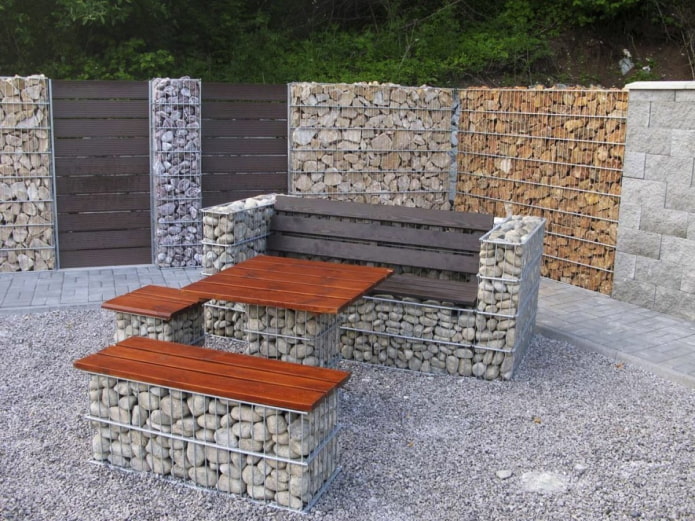

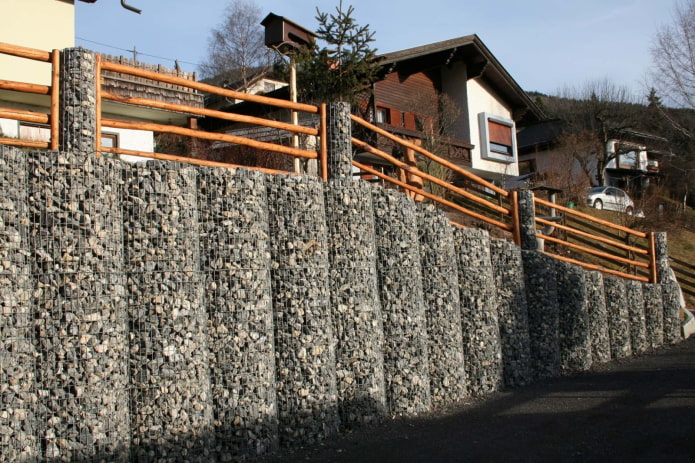
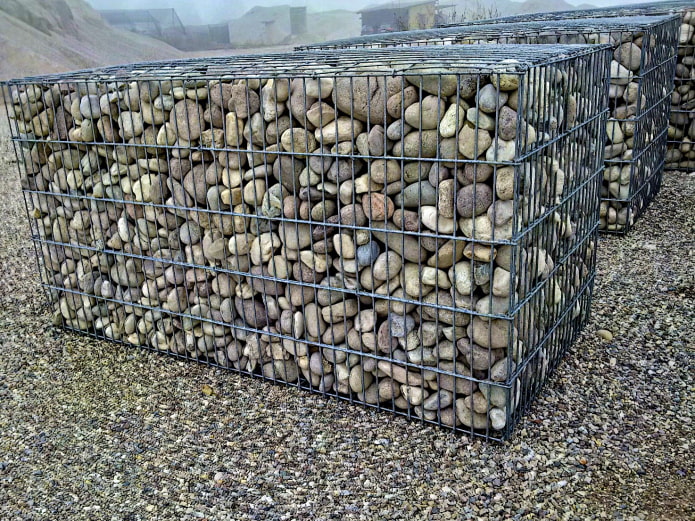

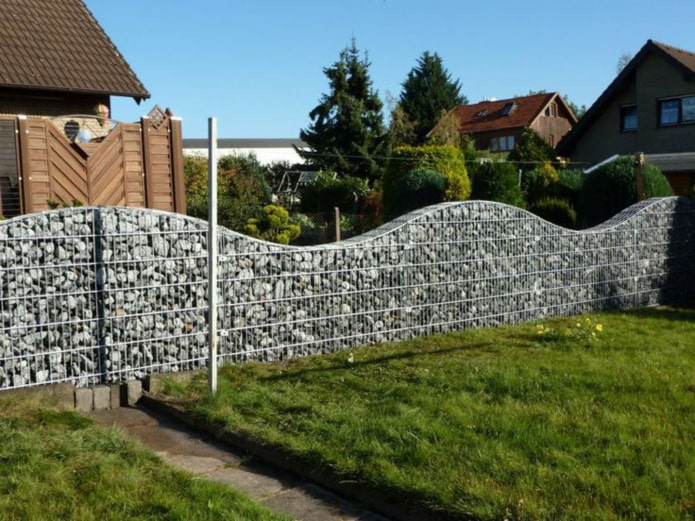
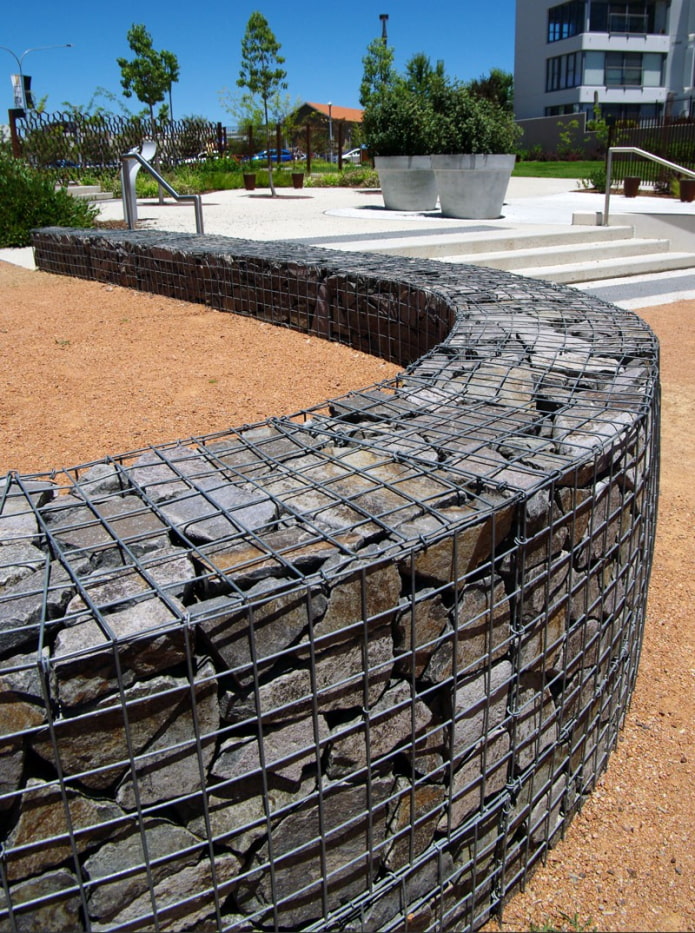
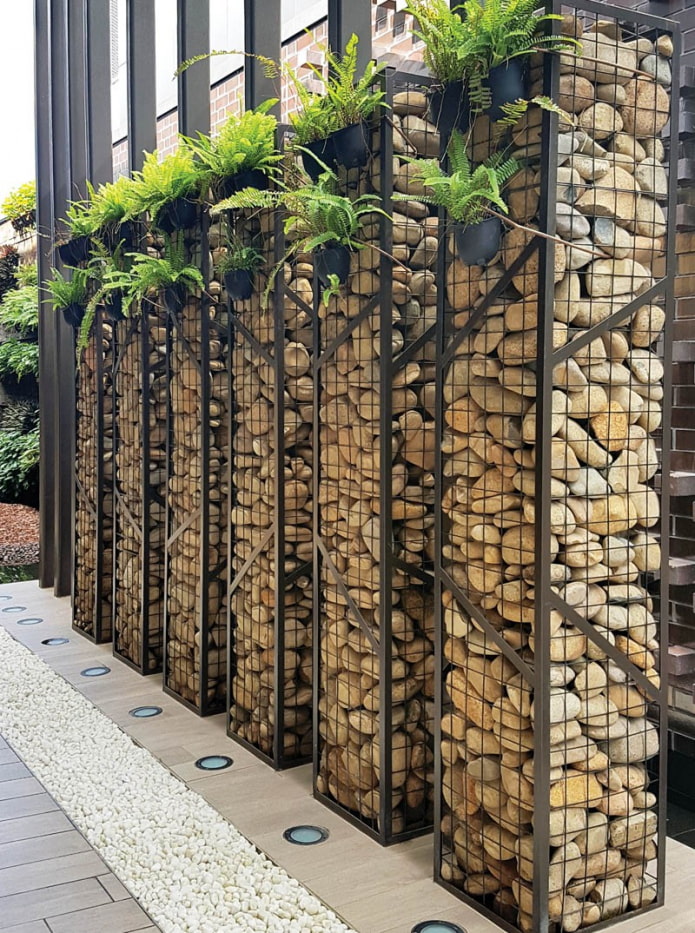
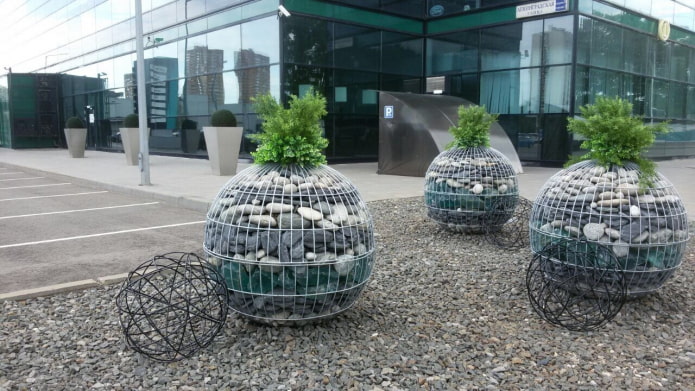
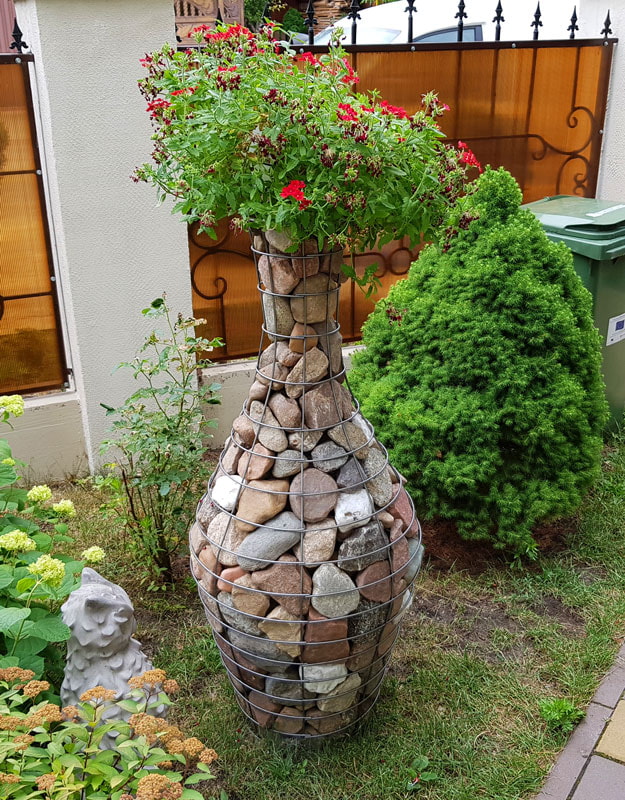
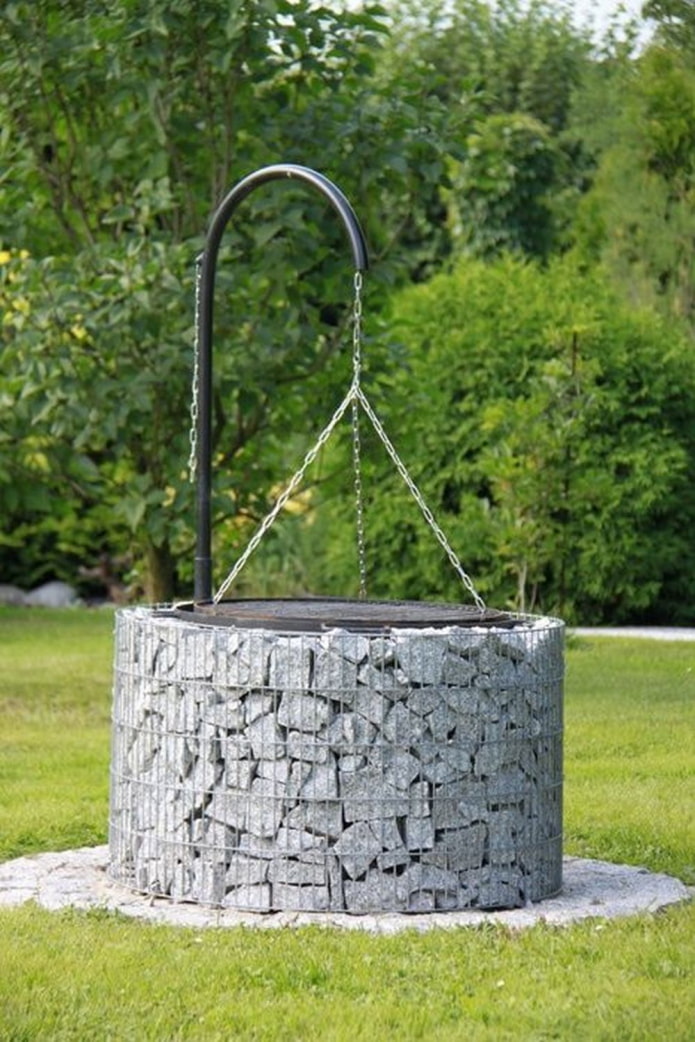
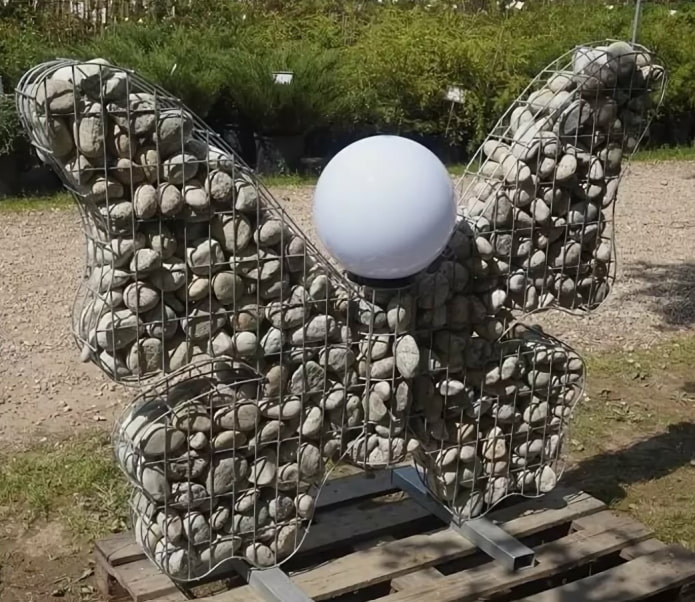
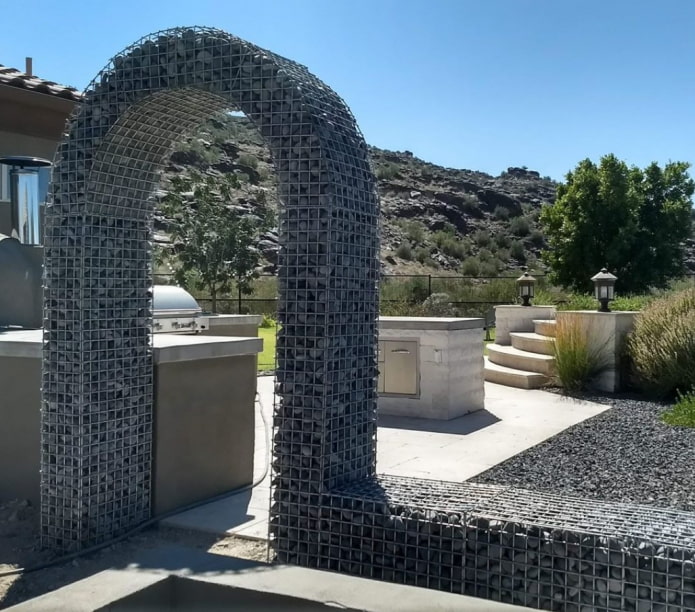
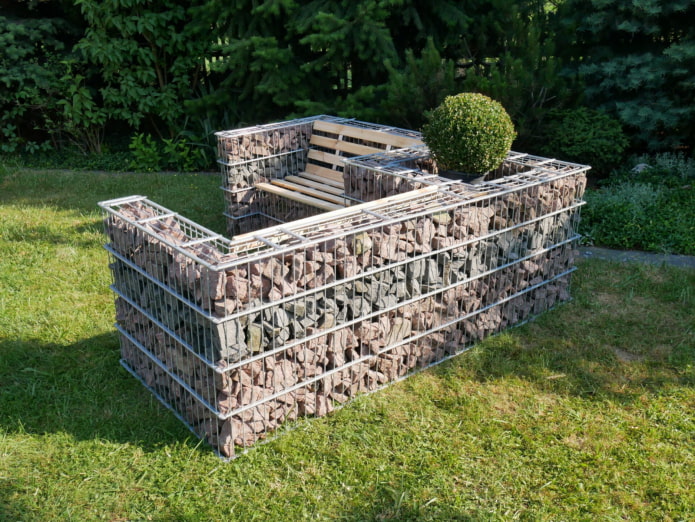
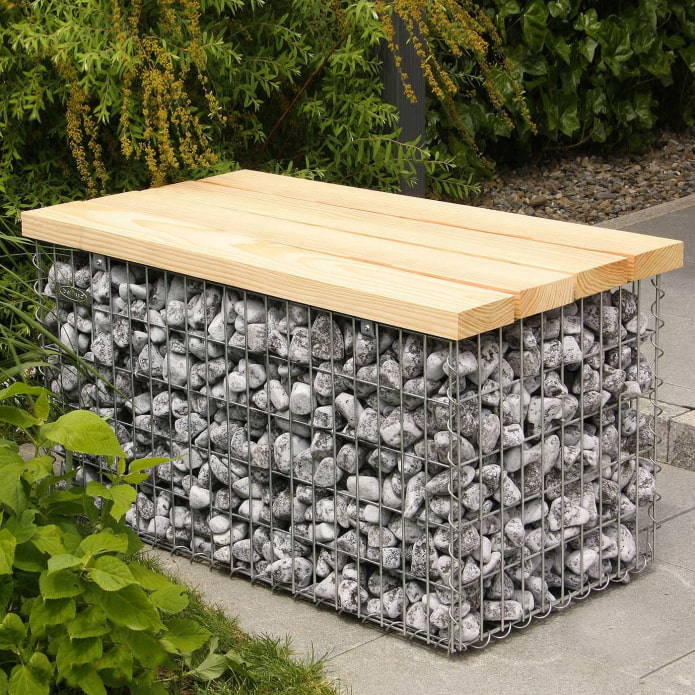

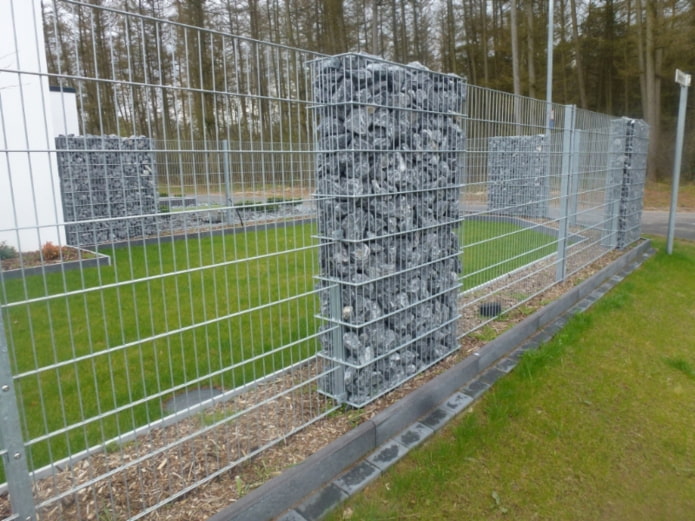
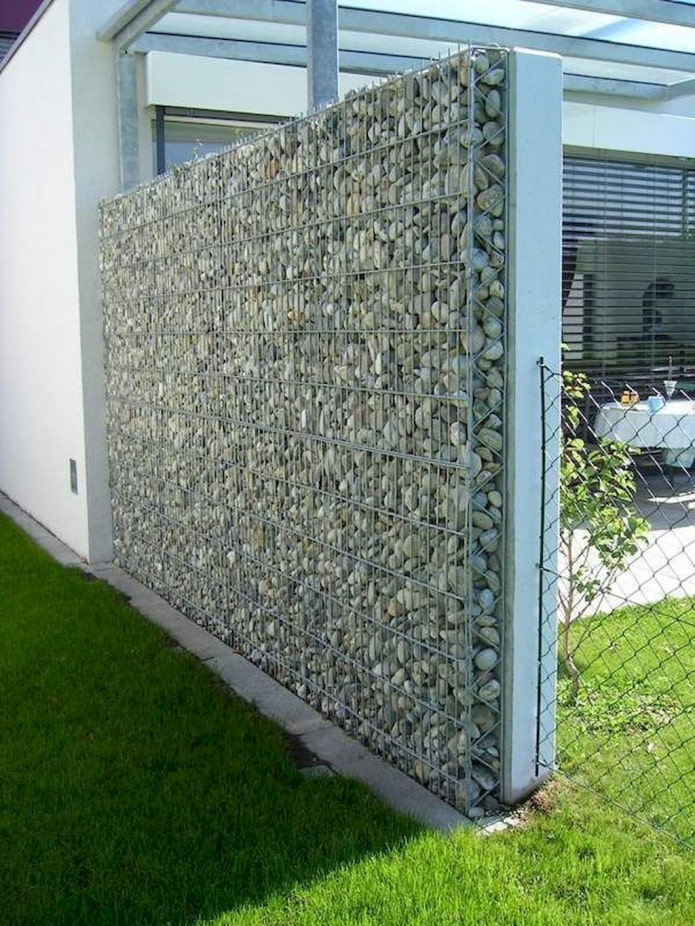
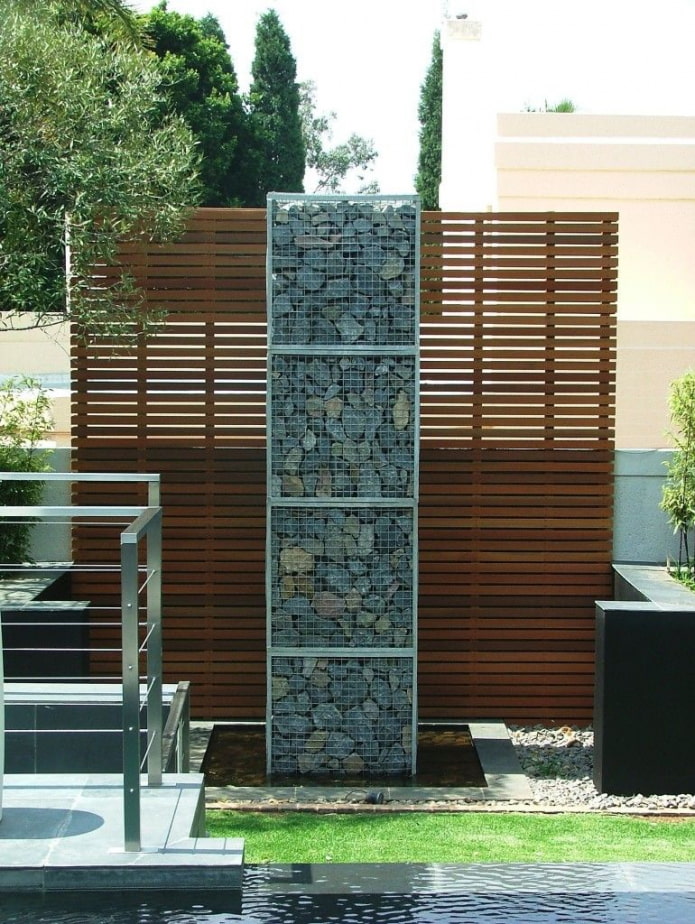
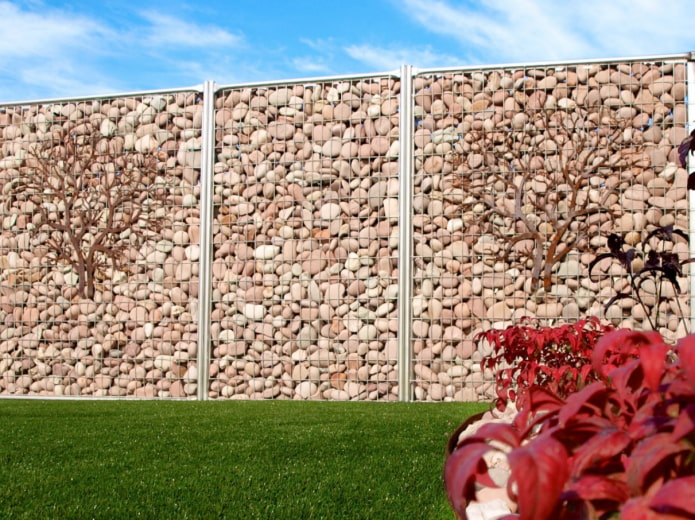


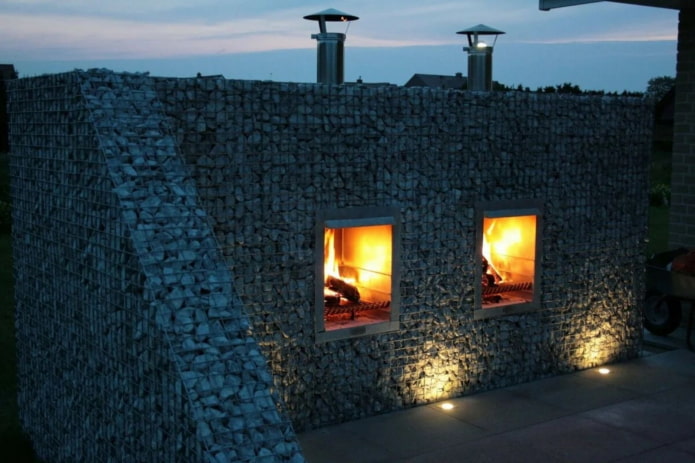
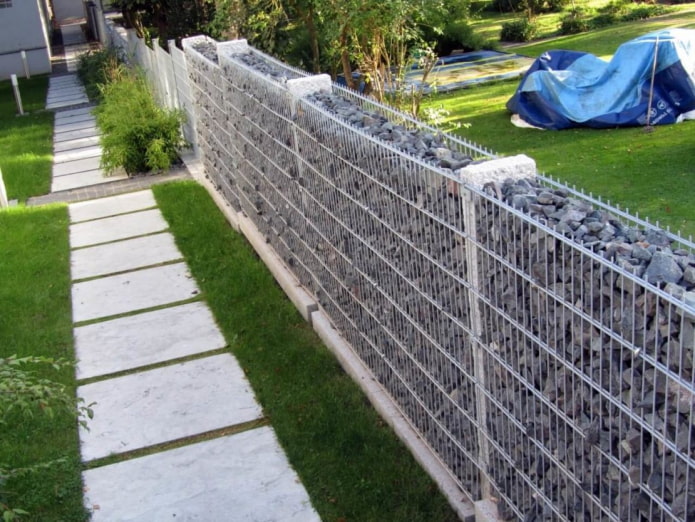
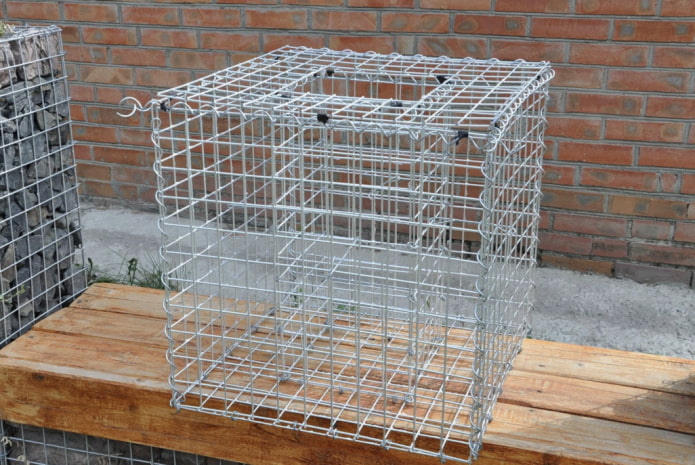




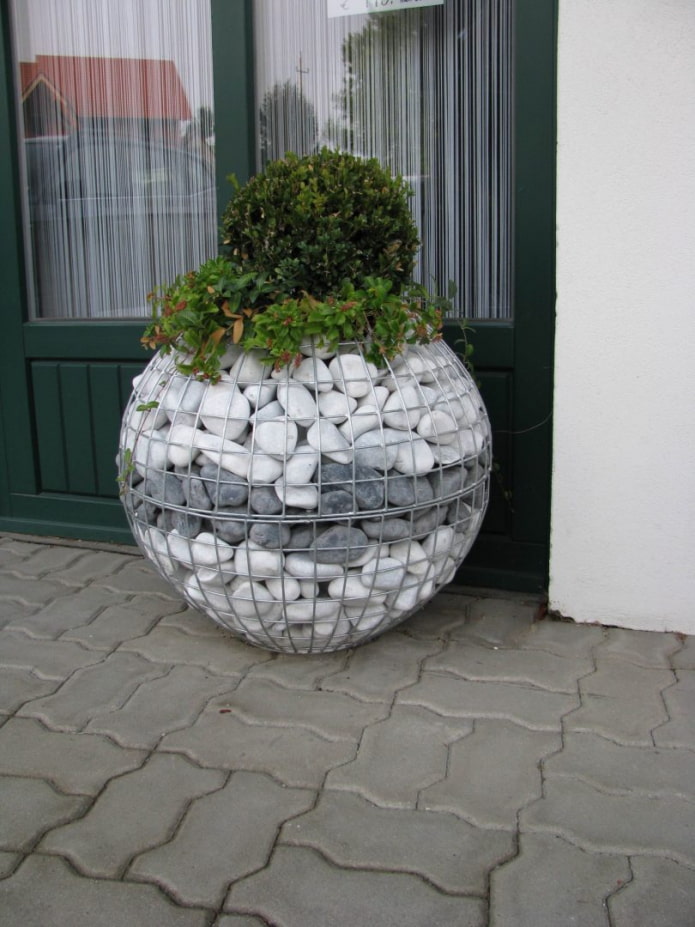
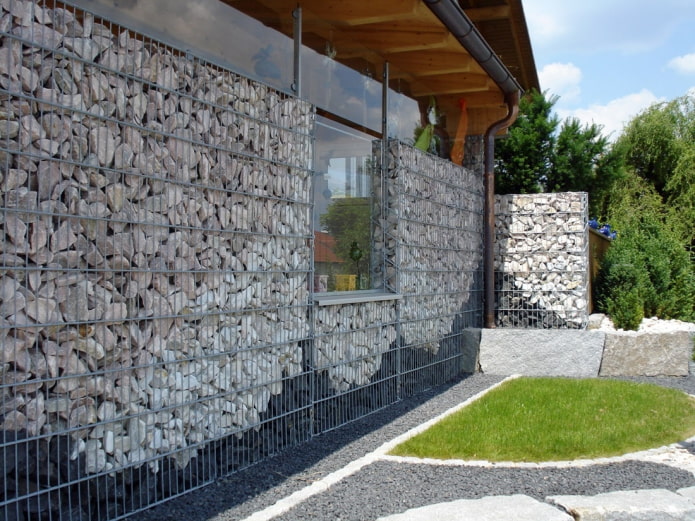

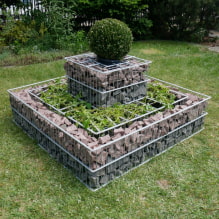
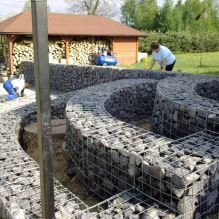

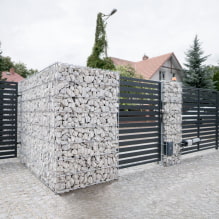
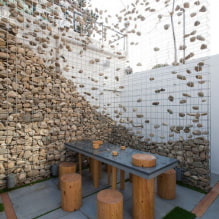
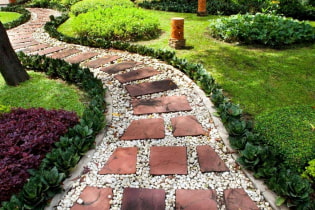 How to decorate garden paths beautifully for a summer residence?
How to decorate garden paths beautifully for a summer residence?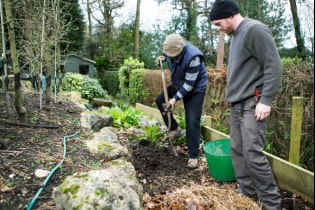 What fertilizers to use in spring?
What fertilizers to use in spring?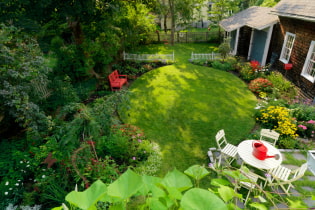 Landscaping of a summer cottage on 6 acres
Landscaping of a summer cottage on 6 acres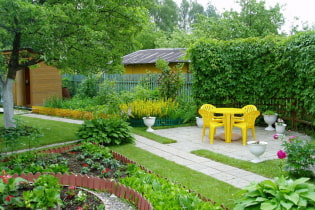 How to arrange the landscape design of a suburban area of 4 ares?
How to arrange the landscape design of a suburban area of 4 ares?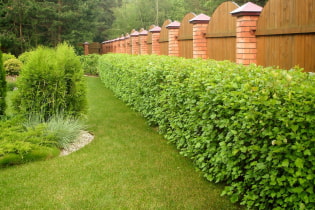 What plants can you make a hedge?
What plants can you make a hedge?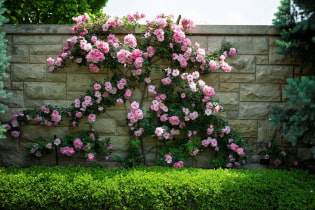 17 fast growing climbing plants to pick up
17 fast growing climbing plants to pick up